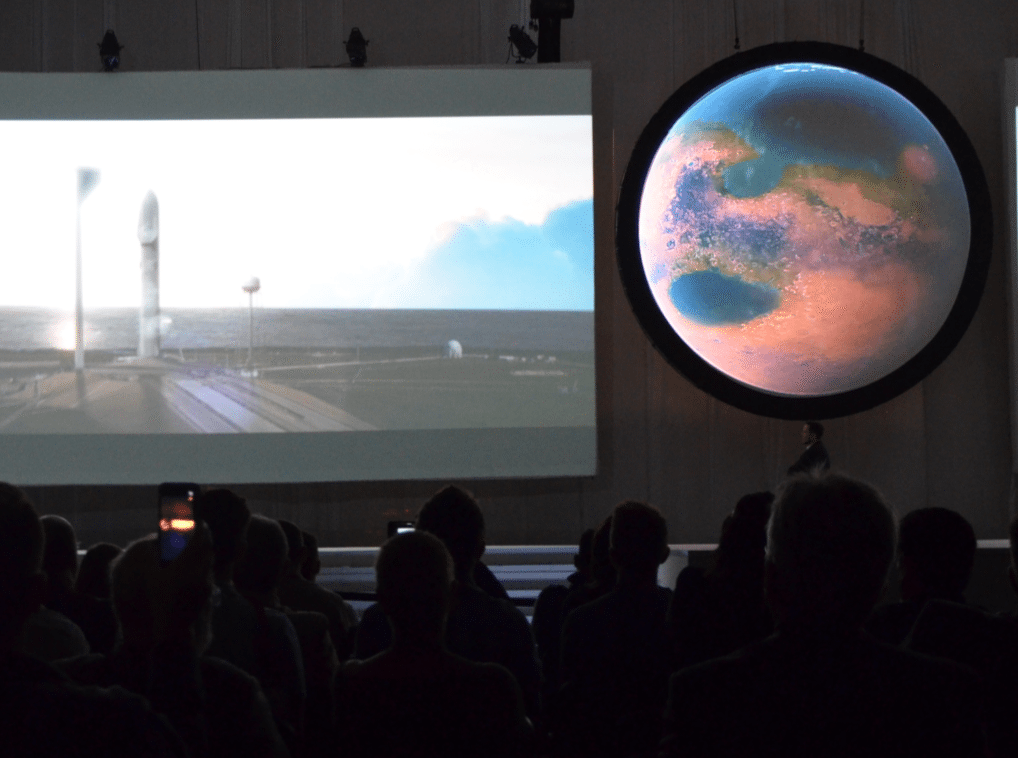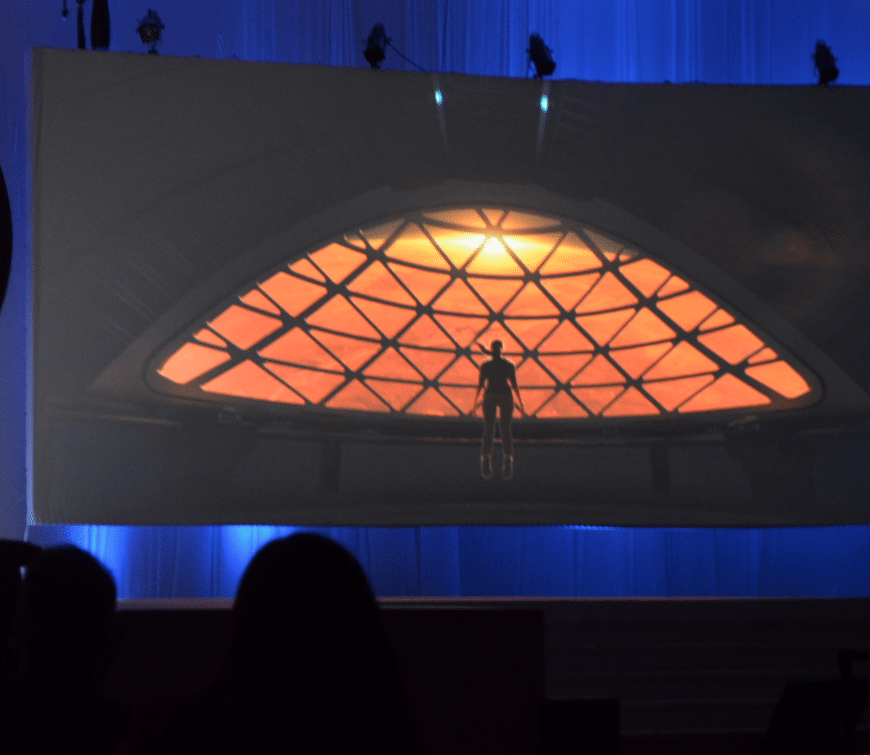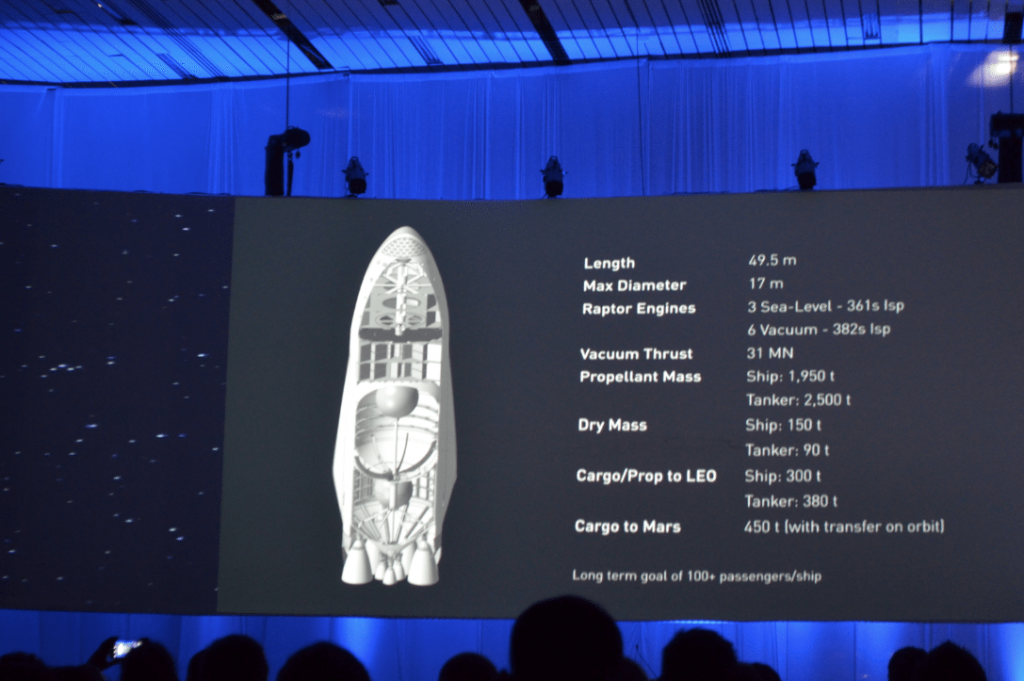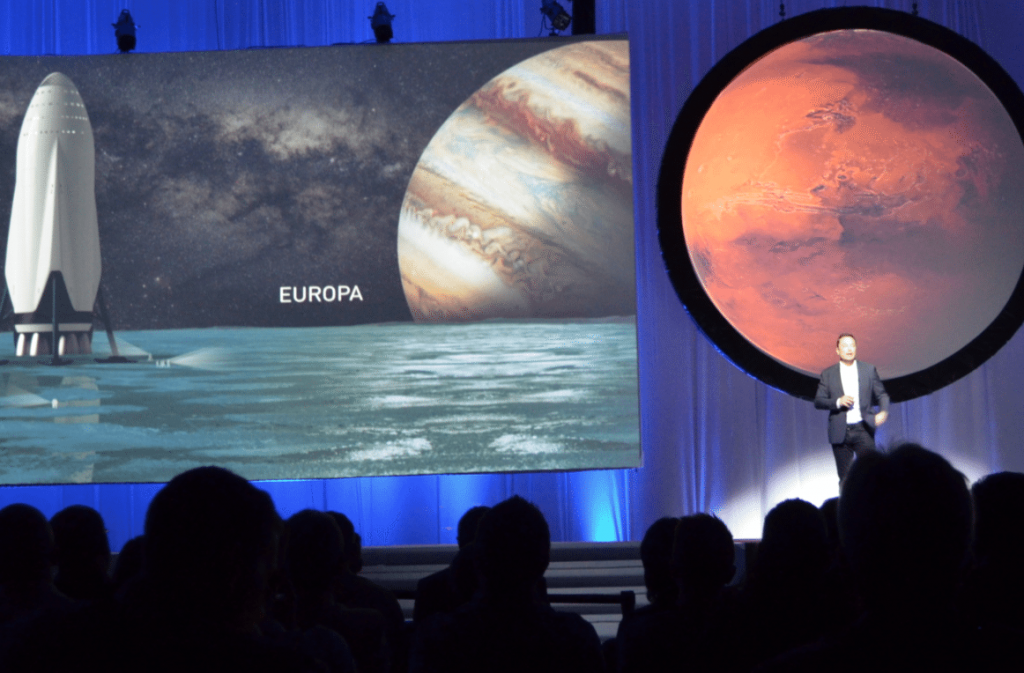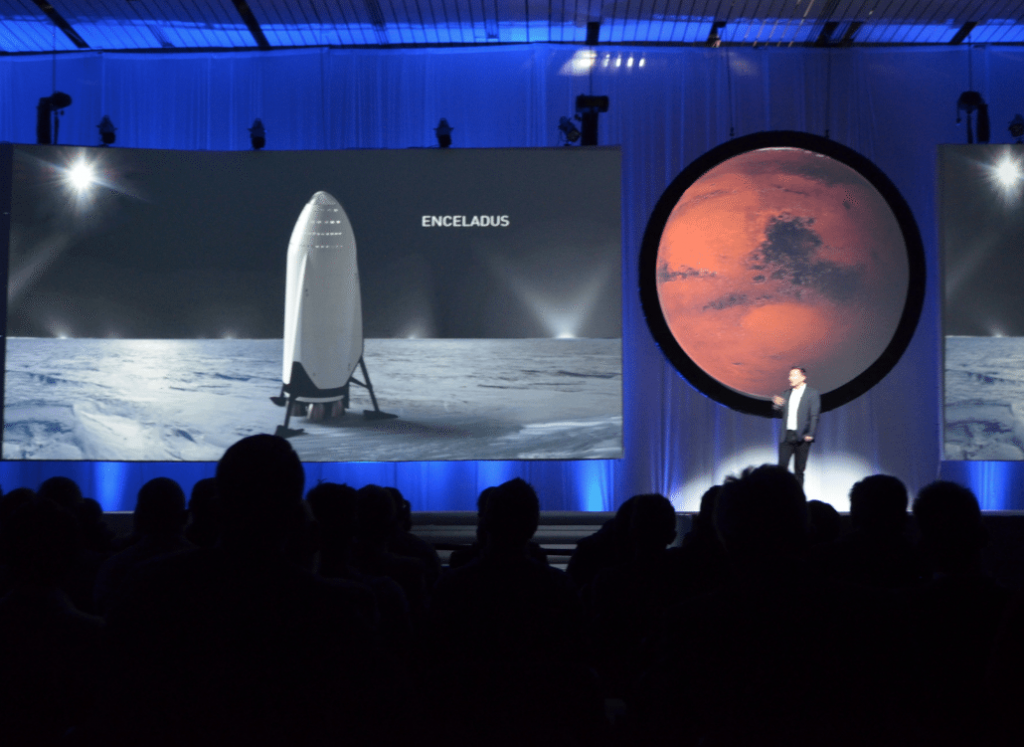3D printing is at the core of Elon Musk’s ambitious plan to transport more than a million people to Mars during the next forty to one hundred years.
Buzz Aldrin, Bill Nye and other luminaries of the scientific and astronautic world were in Mexico’s second largest city, Guadalajara, to hear how the billionaire will accomplish this remarkable feat and build a city on Mars.
A fleet of spaceships
Musk has plans for 1,000 spaceships that will wait in earth’s orbit and be ready to depart every 26 months, the time it takes for optimal planetary alignment to occur.
Each spaceship will transport between 100 – 200 people at a cost, “roughly equivalent to the price of a medium sized house.” Musk has priced the ticket to Mars on the assumption SpaceX can bring the current figure of, “$10 billion per person” down to $190,000 per ton of payload.
The Tesla & SpaceX founder used the example to an airplane ticket to illustrate his point. If airfare were based on using a plane that was good for only a single trip, then it might cost $500,000: the price of a Boeing 737 shared by 180 passengers. Because airplanes can make multiple trips, this cost can be reduced to $43.
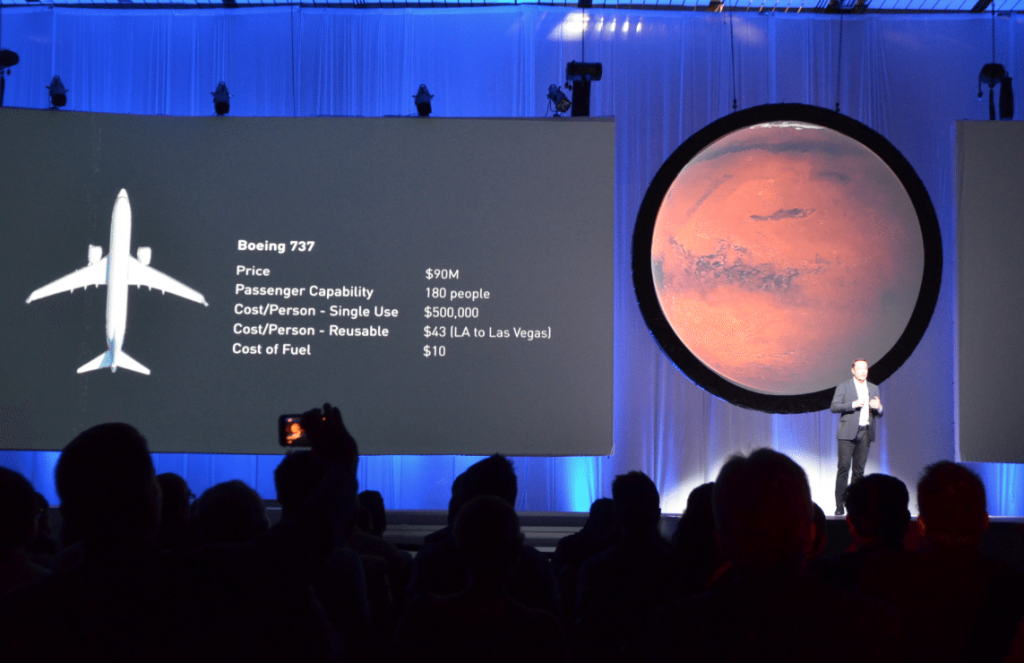
And you thought checked luggage allowances were bad…
The initial journey time of 80 days is a little longer than even the most circuitous journey by traditional means, but the cost is calculated in a similar way. Musk’s target is a price of $140,000 per ton of payload, this would include the passenger’s luggage and food plus necessary life support systems.
Musk hopes that the promise of “zero-g games and pizza” will keep passengers entertained. “It’s got to be fun and exciting so people want to go” he said. Could 3D printing also play a role in enlivening a potentially dull diet for the Mars colonists? Certainly, we have seen NASA exploring the idea and BeeHex has since commercialized some of the work around 3D printing with food.
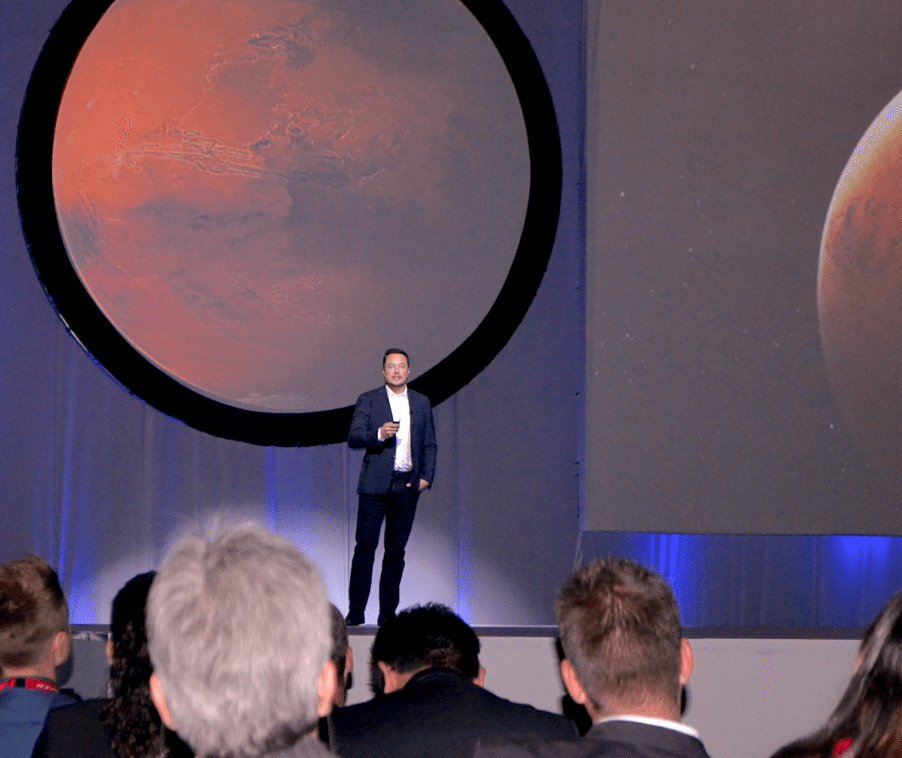
Given Musk’s professed love of Mariachi, this music might also feature as inflight entertainment. And International Astronautical Congress (IAC) host city Guadalajara is probably the best place to recruit interplanetary musicians, given that it is the birthplace on Musk’s music of preference.
By Musk’s calculations it may take between 40 – 100 years to establish a population of a million people on Mars. While the space travel system is composed of multiple reusable elements these do have a finite life. The first leg of the journey to Mars involves liberating paying passengers from the firm grip of earth’s gravity.

This will be accomplished with a rocket 3.5 times greater -by payload capacity- than the current record holder, the Saturn V. The 130,000 tons of thrust necessary to lift 550,000 kg. comes from the Merlin rocket engine family, also developed by SpaceX. This allows the booster rocket to return to earth and land once the upper spaceship containing passengers reaches orbit and detaches.
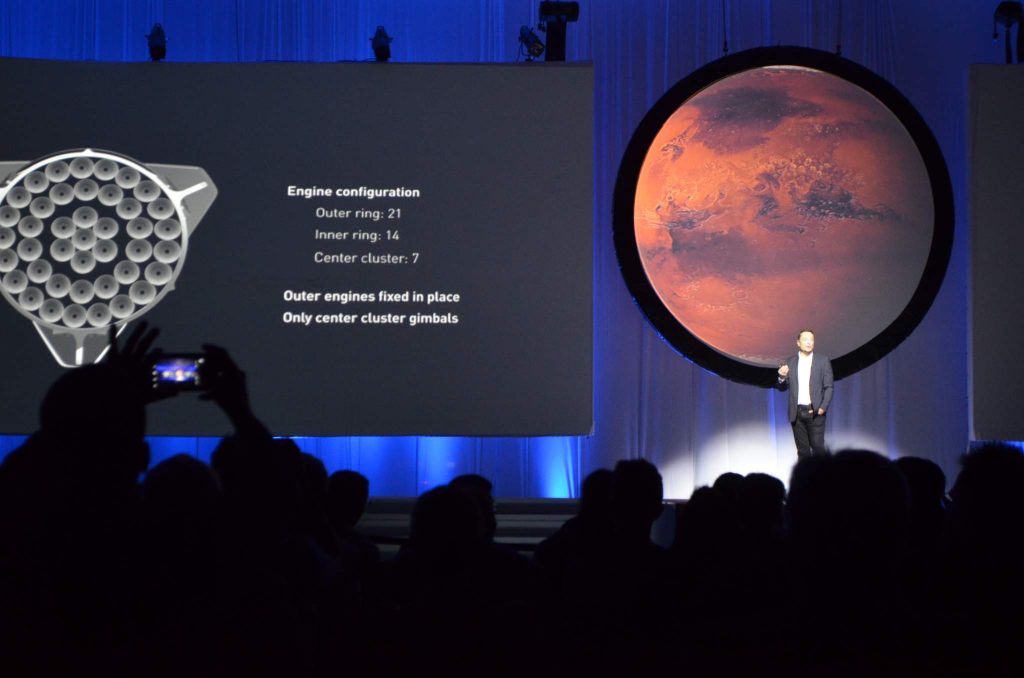
Such an approach is advantageous according to Musk as it allows the space ship to take on the required fuel for the next phase of the journey in orbit. Refueling will take place above the earth and the huge carbon fiber tanks will be filled before the spaceship departs.
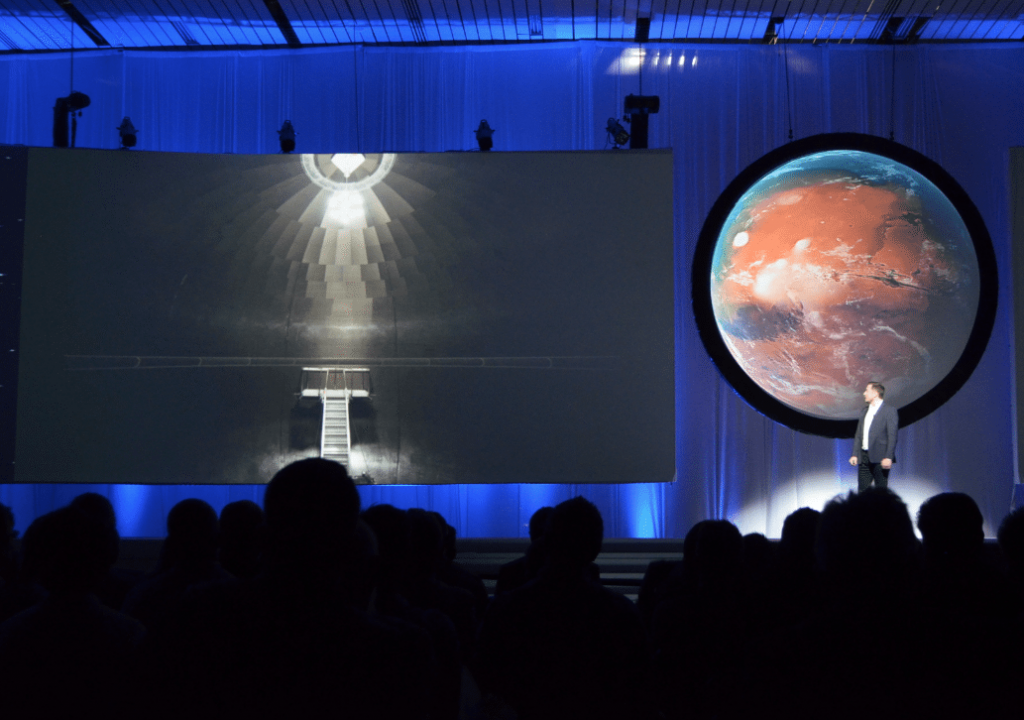
Mining Mars for Fuel
Selecting a suitable fuel required the appraisal of variables including cost, ease of transfer and the potential to produce the fuel on Mars. “Deep-cryo methalox” was chosen over Kerosene or a Hydrogen/Oxygen mix. This methane based fuel can be produced, with relative simplicity, using the Sabatier reaction on the red planet.
Powering the spaceship are 42 Raptor engines, arranged in two outer circles with a cluster of 7 engines in the center. The outer engines are fixed in position, while the central engines can move on a gimbal.
Musk announced the successful testing of the Raptor earlier this week, and has previously discussed how SpaceX use 3D printing to manufacture their Draco engines. Made from Titanium and Inconel, 3D printing allows SpaceX to significantly reduce the cost of fabrication. Integrated cooling channels in the walls of the rocket engine chamber can be created using 3D printing, a process that would be, “a real pain” using traditional methods.
Mars might be “a great place to go” but Musk won’t be among the first group of passengers. “The probability for death is very high on the first mission,” he explained.
In space no one can hear you yawn
On his no-fly stance, Musk might still be swayed: especially after the unusual choice of ‘questions’ posed by some in attendance.
Gems included one gentleman who was keen to regale Musk with tales of his recent experiences at pseudo boho desert hippy fest, Burning Man, a question about ‘why’ we should go to space from someone who had presumably wandered into the presentation by error and another from a person who bizarrely described the, very necessary security workers, as “el Chapo’s militia.”
This turn of events prompted one Twitter wag to remark Musk might be, “reconsidering saving humanity after some of these questions”.

The Expo center in Guadalajara continued to buzz after Musk’s hour and a half was over. Many I spoke to praised his vision and remarked that the $10 billion price tag for the project is dwarfed by the budget for less noble endeavors.
To finance the project Musk joked that Kickstarter might be useful, before suggesting that satellite launches would be a more likely source of revenue. He also said that SpaceX technology may have application in delivering cargo, “to anyplace on earth in 25 minutes.”
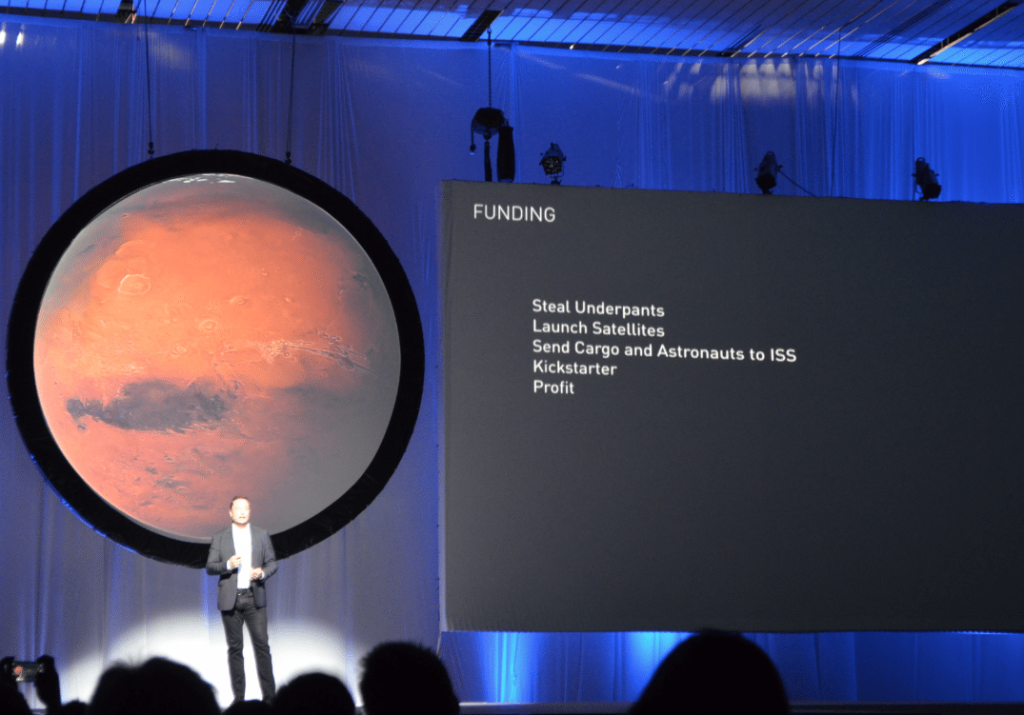
Last gas for 300 million miles
Musk has previously expressed an unwillingness to access venture capital due to concerns that the scope of the project would be scarified to short-term gains. At this event he explained that his other business activities also help provide cash for the project and “the reason I’m accumulating funds is to fund this.”
If observers thought Musk’s plans to begin Mars flights by 2023 were impressive, then the concluding segment of his presentation could be called out of this world.
Mars might serve as an interplanetary gas station with spaceships using the planet as a staging post before heading on towards Jupiter, Saturn or even past Pluto. Musk does not suggest his technology is suitable for interstellar journeys, but for those content to jaunt around within our solar system he is confident SpaceX will be the carrier of choice.
And thankfully the spacious looking living quarters suggest that refuge from even the most Ravenous Bugblatter Beast of Traal might be found.
All photos by Michael Petch

